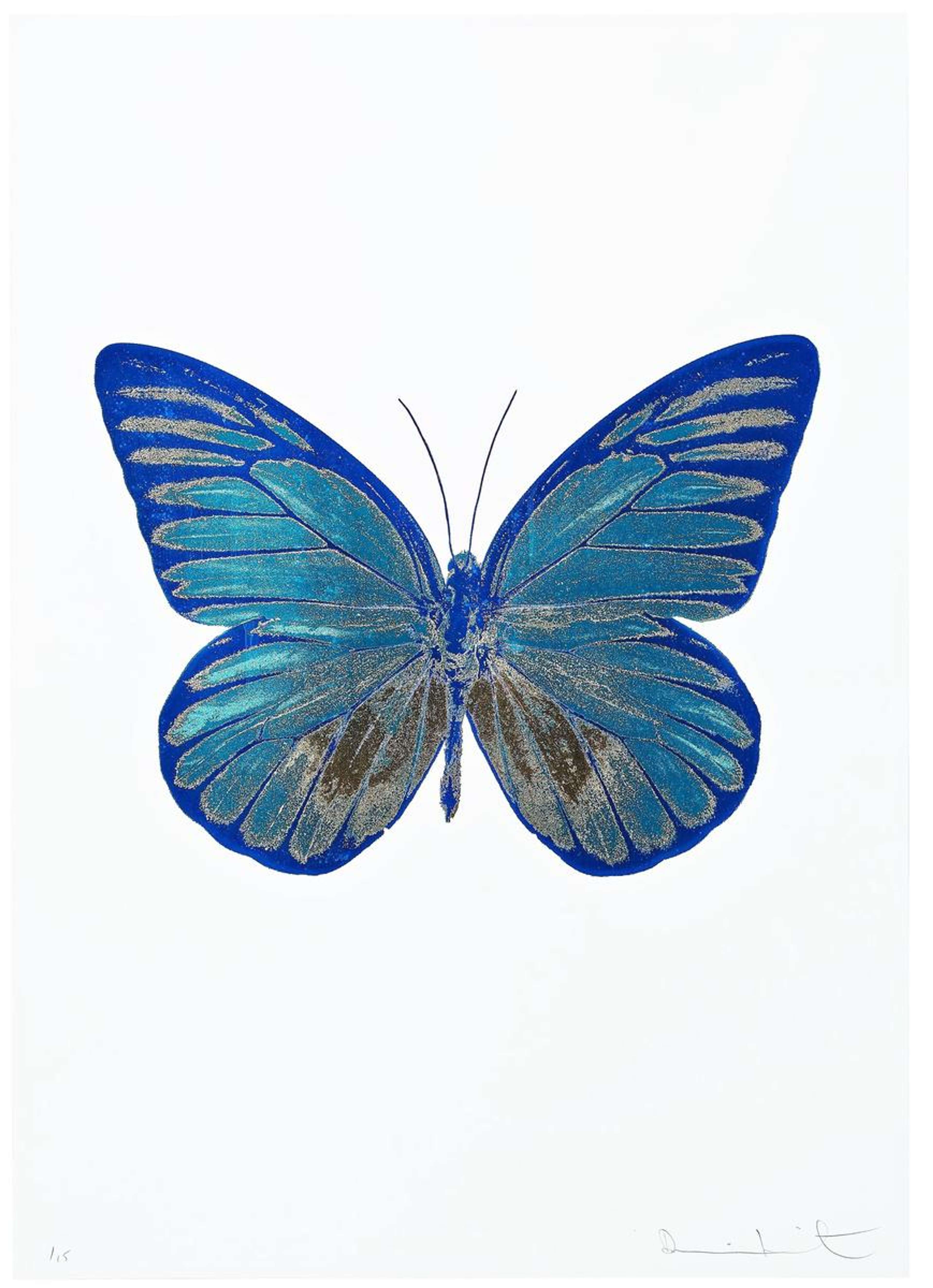
The Souls I (topaz, oriental gold, Westminister blue)

The Souls I (topaz, oriental gold, Westminister blue)
Signed Print
Damien Hirst
£5,000-£7,500
$10,500-$15,000 Value Indicator
$9,500-$14,000 Value Indicator
¥50,000-¥70,000 Value Indicator
€6,000-€8,500 Value Indicator
$50,000-$80,000 Value Indicator
¥1,000,000-¥1,500,000 Value Indicator
$6,500-$10,000 Value Indicator
There aren't enough data points on this work for a comprehensive result. Please speak to a specialist by making an enquiry.
72 x 51cm, Edition of 15, Foil Block
Meaning & Analysis
The Souls I (topaz, oriental gold, Westminster blue) is a print from Damien Hirst’s extensive series, The Souls, from 2010. The print shows a large butterfly with its wings outspread, set against a white backdrop. Depicted in topaz, gold and blue, the image of the butterfly has been rendered flat and simplified into block colours, obscuring the fine detail of the real butterfly wings.
Reminiscent of the work of Pop artist Andy Warhol, Hirst creates a vast series of prints, each with the same subject and composition. There are four species of butterflies depicted across The Souls series, each print showing one, within which there are 80 colour variations, each presented as an edition of 15. Hirst uses a foil block printing technique to give his butterflies a shimmering effect to represent the way their wings would reflect the light.
The butterfly motif is a prominent figure that Hirst has used throughout his career to bring together themes around morality, life, love, faith and aesthetics. Speaking of his obsession with butterflies Hirst has explained, “I think rather than be personal you have to find universal triggers: everyone’s frightened of glass, everyone’s frightened of sharks, everyone loves butterflies.”